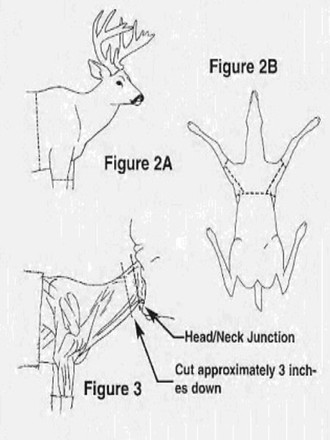Field Care Tips
Remember to always bring the appropriate tags/licenses with your trophy to the taxidermist. Because of various diseases that wild game can transmit to humans, always use caution when handling the carcass by wearing rubber or latex gloves and washing your hands thoroughly with soap and water after handling wild game.
Please bring your animal in as soon as possible. Del prefers to cape and skin the animal; however, if you can’t bring it in right away please take the following precautions to help ensure a quality mount.
Birds
- Take the bird immediately to your taxidermist.
- Do not gut the bird.
- Pick the best bird: the one with the least blood stains, broken feathers/bones, and pin feathers.
- Rinse off any blood on the feathers with water.
- leave whole carefully put into a plastic bag and freeze. Be careful not to damage the feathers, including the tail. If the bird’s tail feathers do not fit in the bag do not bend them, let the tail stick out of the bag and tie the bag loosely.
Small Game
- Do not gut.
- Leave whole and freeze, or keep cold/dry and bring to the taxidermist as soon as possible.
- Animals coyote sized or smaller should not be skinned unless by a professional.
- Small game, especially carnivores, will spoil quickly because of the thin hide and bacteria. If you can’t get to a taxidermist immediately, as soon as the carcass cools completely put it in a plastic bag and freeze it.
Shoulder Mounts
- Avoid dragging the animal if at all possible; if necessary, drag by the antlers and keep the head, neck, and shoulders off the ground.
- Never cut the throat, brisket, or neck.
- Cut the hide around the body about 4-6 inches behind the shoulders. (Fig. 2a)
- Cut the skin around the legs just above the knees. (Fig. 2a)
- Make a cut up the back of the legs to the previous cut around the body. (Fig. 2b)
- Peel the skin forward to the head.
- Cut through the neck (not skin) and spinal column about 3 or 4 inches below the head/neck union. (Fig. 3)
- Soak up any blood with paper towels.
- Keep the cape cold and dry.
- You may bring your shoulder mount in for caping.


